Levine Connection



by DJ Cook ’25
DJ contributed these reflections while studying abroad in Cannes, France during the 2024 spring semester.
This spring, I’m spending the semester in Cannes, France, at the Collège International de Cannes. I’m participating in an affiliate provider program through AIFS. My particular program perfectly combined my interests and areas of study. I’ve studied French for 10 years, so I definitely wanted to spend a semester in a French-speaking country and work toward fluency in my second language. Cannes is famous for its annual international film festival. This specific semester abroad program coincides with the festival. Further, I study theater and film back home in Charlotte in addition to French. My coursework here
includes electives like film and theater, and I am living in a city that has a thriving arts scene. As a student of the arts, I wanted a program that allowed me to continue to immerse myself in the creative world. Back home, I also work as a lighting designer and theater technician outside of my studies, so this semester has been a unique opportunity to explore that in another cultural context. Lastly, traveling is an important personal goal of mine. A program in Europe allows for easy travel to other cities and countries. Thus, I have many opportunities to explore other cultures during my weekends and holidays.

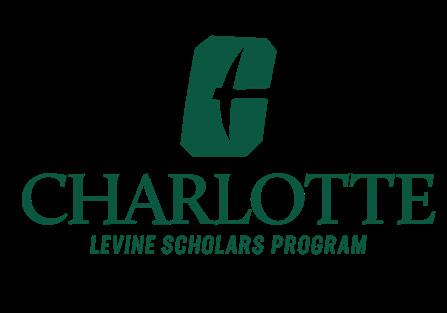

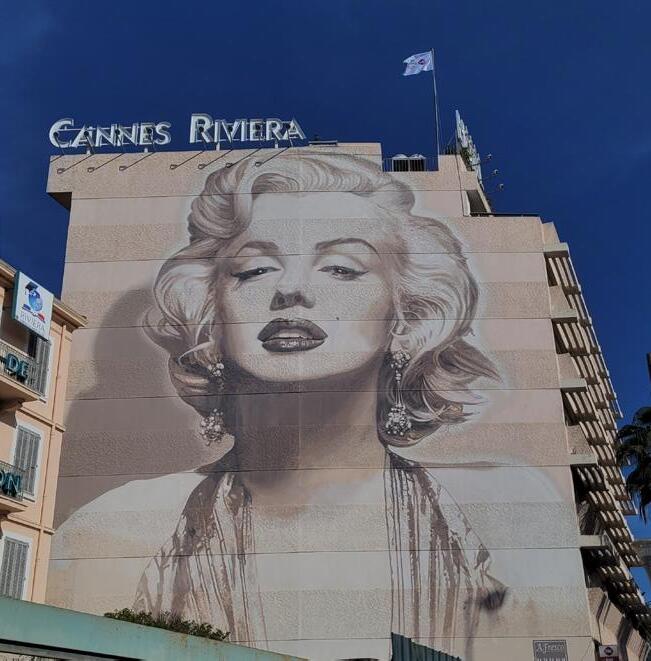
The Collège International de Cannes is a school for foreigners learning French. My AIFS program has 24 total participants. Most of my classes are populated with fellow Americans, but all of my classes are taught by native French professors in the French style of schooling. Furthermore, the location of the campus is amazing. It’s within walking distance of the city center and one block from the beach. We even have a back patio that you can sit on and lounge in the sun with a direct view of the ocean!
The Cannes Film Festival is an international film festival that runs for approximately two weeks each May in Cannes, France. This high-profile event is attended by many A-list celebrities and acts as a firstviewing opportunity for many blockbuster films. This year, the festival will be in its 77th edition. Cannes, which usually has a population of around 75,000, more than triples in population with over 230,000 festival attendees each May. The effects of the festival on the identity of the city of Cannes can be seen year-round around town: construction barriers feature photos of past celebrity attendees, murals all over depict famous actors and movie scenes and, of course, the numerous film-related souvenirs available at tourist shops.
Through my study abroad program, I have the opportunity to have an internship placement during the run of the festival. My exact placement is currently still in the works, but I’m hopeful for something involving live-event skills, such as working as a photographer or audio-visual technician. This week was the 7th annual Canneseries festival, a smallerscale festival similar to the Cannes Film Festival that runs for five days and is centered around television series shows. I had the opportunity to attend this event and experience watching a premiere screening in the Palais des Festivals, walk the pink carpet, and see the celebrity cast and crew of shows in person. I’m excited for the full-scale opportunity with the film festival and the opportunity to contribute to the event as an intern.
When not in class or exploring Cannes, I’ve also taken a lot of time to travel around France and Europe. In France, I’ve visited Antibes, Nice, Grasse, Nîmes and Paris. Around Europe, I’ve been to Monaco, Italy (Venice, Pisa and Florence), Croatia (Zagreb), Slovenia (Ljuljblana), Austria (Vienna) and the UK (London). I’ve taken every form of public transportation, including approximately 21 buses, 10 subways, 9 trains, 6 trolleys, 3 planes, 2 trams, a funicular, a boat and a car during my spring break trip alone! My upcoming trips include a weekend in Amsterdam, visiting Levine alum Carlos Chavez-Ramirez ’21 in Vicenza, Italy, and exploring a few cities around France when my family

While abroad, DJ saw live shows like “Phantom of the Opera.”
comes to visit in May.
In terms of the arts, I’ve had multiple exciting opportunities to see shows in the past few months. I’ve seen a ballet, a concert and two movie screenings at the Palais des Festivals in Cannes. When I visited London over spring break, I saw a modern version of Romeo and Juliet at Shakespeare’s Globe Theatre and four shows on the West End, including Matilda, Stranger Things: The First Shadow, Back to the Future and Phantom of the Opera. I hope to catch a few more live shows during my time in France, and I am very excited to watch as many movies as possible during the film festival.
A semester abroad is a life-changing experience. It’s the perfect opportunity to reflect on and reassess your personal values. For example, this is the first time in the past few years that I have spent extensive time not working in a theater. I definitely miss it, and I’m excited to get back to working on shows this summer. However, it has also been a refreshing break. I’ve gotten the chance to get more into photography, using my new camera to document my adventures. I’ve learned how to slow down and appreciate the dayto-day simplicity of life: people watching on my daily commute to school, stopping to watch the sunset on the beach, wandering town in pursuit of interesting things to photograph. I’m excited to see what these last two months in Cannes bring!
by Akshara Sisodiya ’27
I began birdwatching my freshman year of high school, after my biology teacher started a club on campus and encouraged me to join. At first, I was pretty hesitant, but my teacher declared me a member, so I went. Somehow, at the end of that first year, I had stepped into the role of being president of the club, a position I held until I graduated. I think it was one of my most impactful leadership experiences, from finding a way forward amidst the COVID-19 pandemic, transitioning back into in-person school and meetings to building up the club’s membership and activities. After claiming my spot as a Levine Scholar at UNC Charlotte, one of the first student organizations I went looking for was a place to keep connecting with others in birding communities. Birdwatching has become one of my main hobbies in the years since. I cannot in good faith ever be called a morning person, but one of the only things I will happily wake up early for is going into the woods to look for creatures of all kinds. There is a peace to it— focusing on bird calls and trying to get eyes on them with binoculars; the excitement of a correct ID; the thrill of seeing something you did not expect. As someone who was outside constantly as a child, wandering around in the woods or wetlands feels like going back to my roots—seeing dragonflies and cool trees and mushrooms and spiders and flowers, and yes, birds. I am now a part of UNC Charlotte’s Birding Club, a student chapter of the National Audubon Society as part of their leadership, a sort of continuation of a personal legacy. It is quite interesting seeing the
contrast between my university and my high school’s birdwatching clubs. In high school, I had more of a focus on the hobby itself, with most meetings mainly about figuring out a time and place for our group to go birdwatching, or about tips and tricks for finding birds. We do these things in college as well, but the vision is larger. There is a larger emphasis on advocacy for conservation and environmental protections. We are just a part of the larger ecosystem, and protecting our natural spaces confers just as many benefits on humans as on flora and fauna. There is an Audubon Advocacy Day where members of Audubon Societies all over North Carolina and other states meet with local representatives to encourage support for legislation that supports these goals. We also want to build community. Birdwatching is something that anybody can participate in anywhere, and it should be a welcoming and comfortable space for everyone. We can do this in the club by hosting trivia nights, watching movies and by just having conversations with one another, an ever more necessary tool as we go forward.
What’s at the heart of it all? Observing and being a part of our natural environments, and the joy it can bring. If you are interested in birding, here are some simple steps you can take to get started:
• Go on walks around where you live! Birds tend to be more active in the morning, but you’ll often find some at any time of day. Try to pinpoint where calls are coming from, and then try to get eyes on the bird itself. You
might see it right away, you may have to wait a little bit, or you may never see the animal at all.
• Bird field guides and apps such as Merlin Bird ID (it’s free!) can help you figure out what birds are in your area. With a little bit of practice, you’ll soon be able to identify what they are just by sound and sight!
• Expect the unexpected. Sometimes you’ll see zero birds in two hours. Sometimes you’ll see 14 species in 25 minutes. Sometimes the most consistent places to find birds may be strange places, like sparrows in a Lowe’s Garden Section or grackles in a parking lot.
• If you start looking for birds, you’ll start seeing them. Before I birdwatched, I didn’t really realize how many birds I could find just by walking around. Now, I can often see vultures circling or mockingbirds calling just as I walk to class.
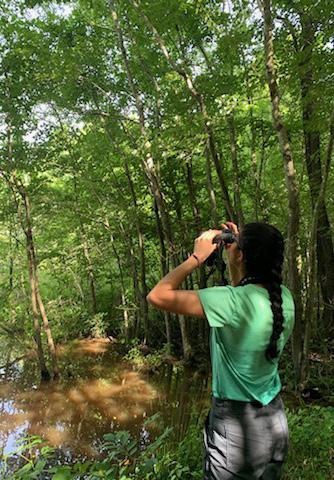
by Sonia Birla ’25
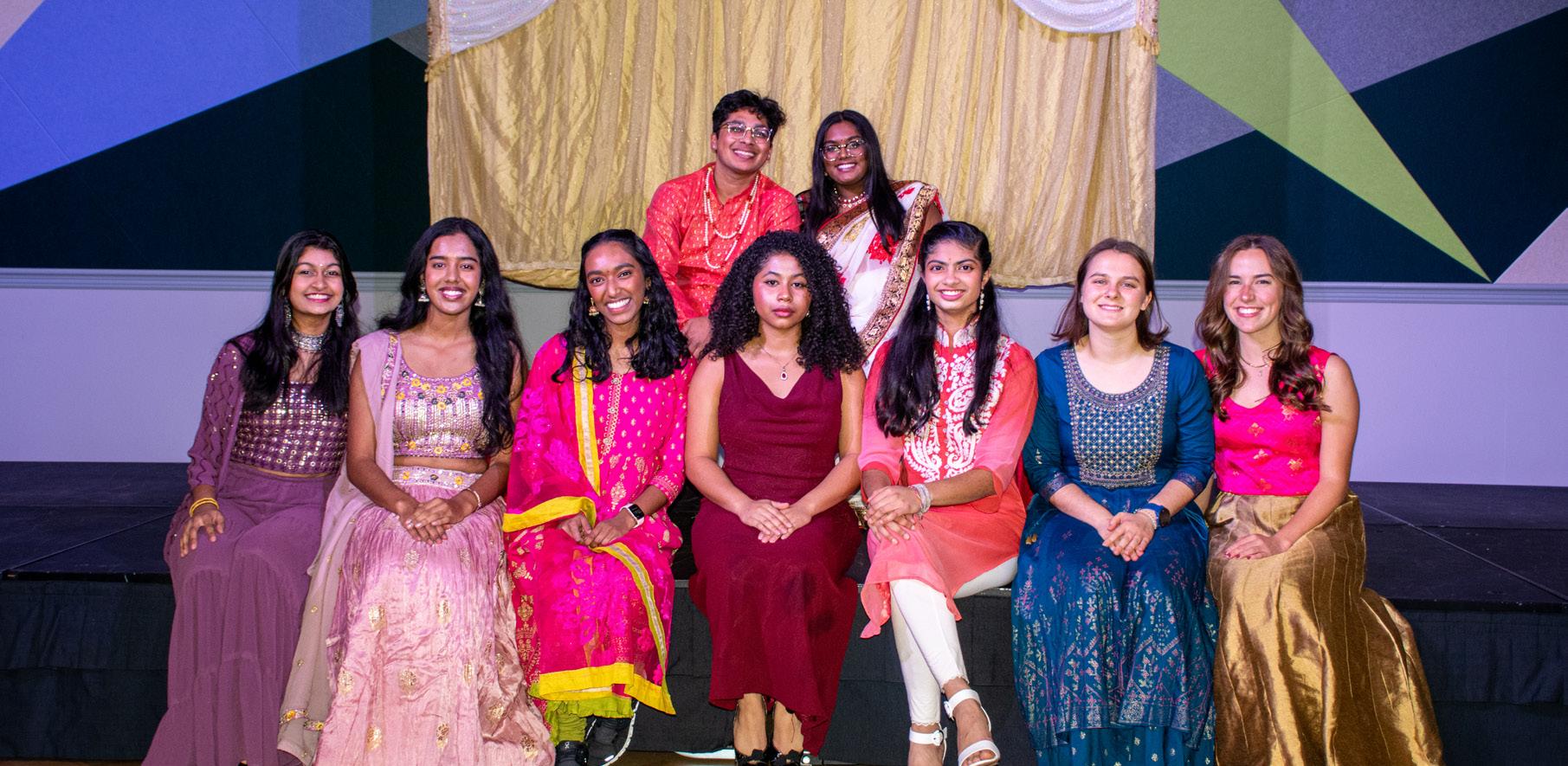
When I first shared my vision for the Mock Shaadi, I found myself giggling at my executive board’s faces. They looked terrified. “How in the world are we going to do all of that?” asked my events coordinator. “Sounds like a lot.”
And it was a lot. That year was the South Asian Student Association’s (SASA) second year as a student organization, and my first year as its president. After conquering the growing pains of the previous year, our organization was ready to go into the new school year with fresh ideas and unmatched tenacity. Within our first months of the year, we held engaging events attracting hundreds of students across campus. Despite the great turnout, I kept thinking about this “Mock Shaadi,” or fake wedding, and what it could look like. I had seen that other universities across the nation had hosted similar events, but nothing this big had ever been done in North Carolina. With no blueprint to follow, I embraced the opportunity to push the boundaries of what a campus club could achieve to run an event of unprecedented scale.
Weddings are the crowning jewel of South Asian culture; the concentration of music, dancing, culture, glitz and glamor is unmatched. Hoping to bring this energy to campus, SASA planned the Mock Shaadi. It was a three-day, $10,000 event showcasing wedding cultures across the cultures, traditions and religions of South Asia. For three days in late November, we transformed our campus into a wedding venue, complete with music, dance performances and three sets of brides and grooms.
The final day centered around the Hindu-inspired Phere ceremony. Standing before the “fire” in the Union Ballroom (it was just some red pipe cleaners we stuck
in some foam), we re-enacted moments of a traditional wedding ceremony. The bride and groom circled the fire and were pronounced husband and wife. A vibrant reception unfolded afterward, in what was basically a party on the fourth floor of the Union.
For me, Mock Shaadi was about more than just the rituals we shared each day—it was a chance to spotlight the beautiful diversity within South Asian cultures themselves. From a Christian ring exchange to a Hindu Sangeet performance to a Bhutanese candle lighting ritual, we paid homage to the tapestry of faiths throughout the region.
Of course, the mock Shaadi is merely a glimpse into the array of events and initiatives SASA has in store for campus each year. From hosting a state senator to planning a Rangoli art exhibition to celebrating Ramadan, SASA has been such an incredible organization that has changed the landscape of UNC Charlotte and challenged what a cultural organization can truly accomplish.
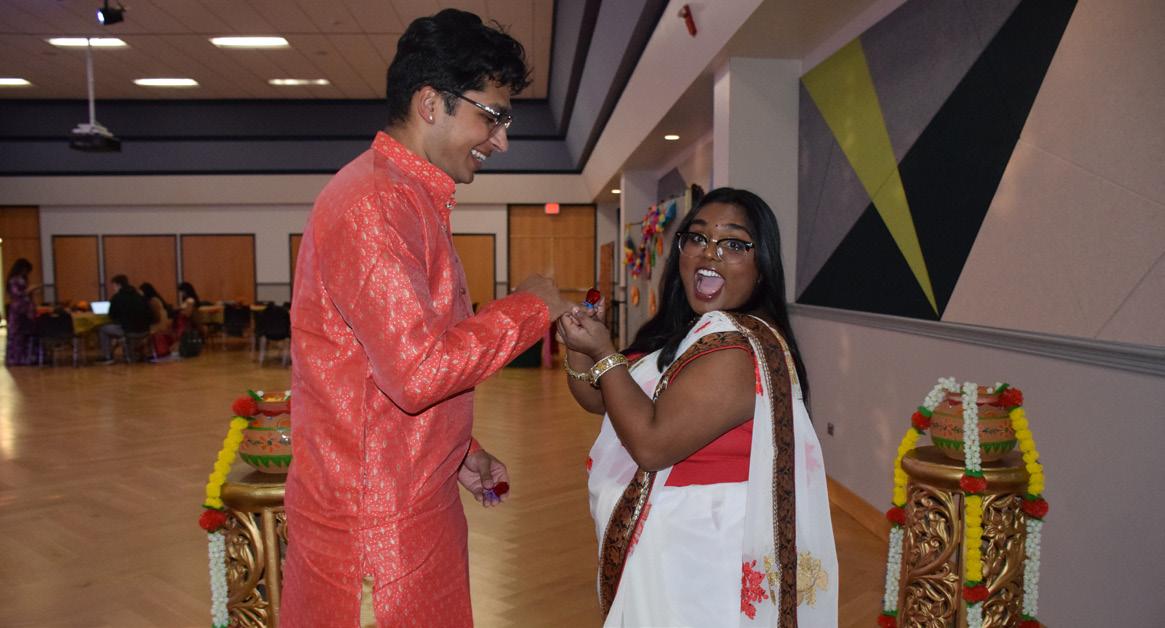
by Natalie Doerfler ’27
It is no secret that Levine Scholars are a competitive group of people. (The Pointless showdowns of 2023 and 2024 during Scholarsgiving make this fact quite clear to anyone within 100 yards of our meeting room.) Many Levine Scholars, including myself, were very involved in athletics before college. I knew that this would be something I would miss as I began my first semester at UNC Charlotte. However, at my first whole group
meeting, I was able to join The Hungrier Hippos. The Hungrier Hippos is an intramural team that was established by a few core members of the LSP class of 2024. Due to the COVID-19 pandemic, intramural sports were not offered for their first few semesters at UNC Charlotte. So, when sign-ups reopened, they eagerly registered a team of scholars (plus friends) under the iconic name: “The Hungrier Hippos.”
Playing intramural sports has given me the opportunity to connect with scholars from different cohorts as well as strengthen the friendships that I have with scholars from my own cohort. During my freshman year I played soccer, volleyball and kickball which allowed me to get to know many of the upperclassmen a lot better than I otherwise would have. My senior LSP mentor also

played on each of these teams with me. As a result of this, I have received some of the most beneficial advice about college and life I will ever hear while warming up to play pickup soccer. One of the aspects of our team that I appreciate the most is that my teammates are understanding and kind, while still remaining competitive. I had never played volleyball before, and the entire team was so supportive while I was trying to learn. It is also common to see other fabulous scholars come out to the games to watch and cheer us on!
While almost all of the original and founding members of The Hungrier Hippos have graduated from Charlotte, we still compete under their name. During the Fall 2024 semester, we played in the intramural leagues for volleyball and soccer, as well as the homecoming
flag football tournament. We are always looking for new athletes to join and new sports to compete in. Our hope is that our team will continue to be passed down from cohort to cohort as a way to bring scholars together and keep them involved in sports that they have always played—or never had the chance to play before!


by Galen Miller ’24
Two back-to-back study abroad programs in Martinique and Taiwan, both islands with complicated political realities and historical contexts yet with vastly different systems and societies took me around the world in two weeks—quite literally. Charlotte to Miami to Fort-de-France to Paris to Beijing to Taipei City to San Francisco to Houston and back to Charlotte again. I recommend both places to anyone, Levine Scholar or otherwise, looking for their next destination or study abroad landing place. In Martinique, the program Martinique: History, Culture and Arts of the Island of Flowers was well designed for us to delve into the complicated past and present of the French region. We focused on exploring sites in Martinique that embodied these complexities and analyzing the island with a critical eye. As one moves about Fortde-France and the surrounding land, the legacies of past colonialism and the impacts of ongoing colonialism are starkly apparent. The island has all of the rights and privileges (in theory, at least) of a French region. Their main agricultural products (which are also their primary economic drivers, apart from tourism), are bananas, rhum agricole and sugarcane, of which the vast majority of each are exported directly to Metropolitan France in a trade pattern that mimics mercantilist colonial wealth extraction. Graffiti concerning the past, more blatantly brutal relationship with Europeans—chattel slavery, the genocide of Indigenous people—abounds in Fort-de-France. Other murals call for solidarity with nearby Haiti. In the capital city, you can watch tourists disembark their monstrous cruise ships from your perch on the very dock where enslaved people were unloaded, sold and subjected to extreme


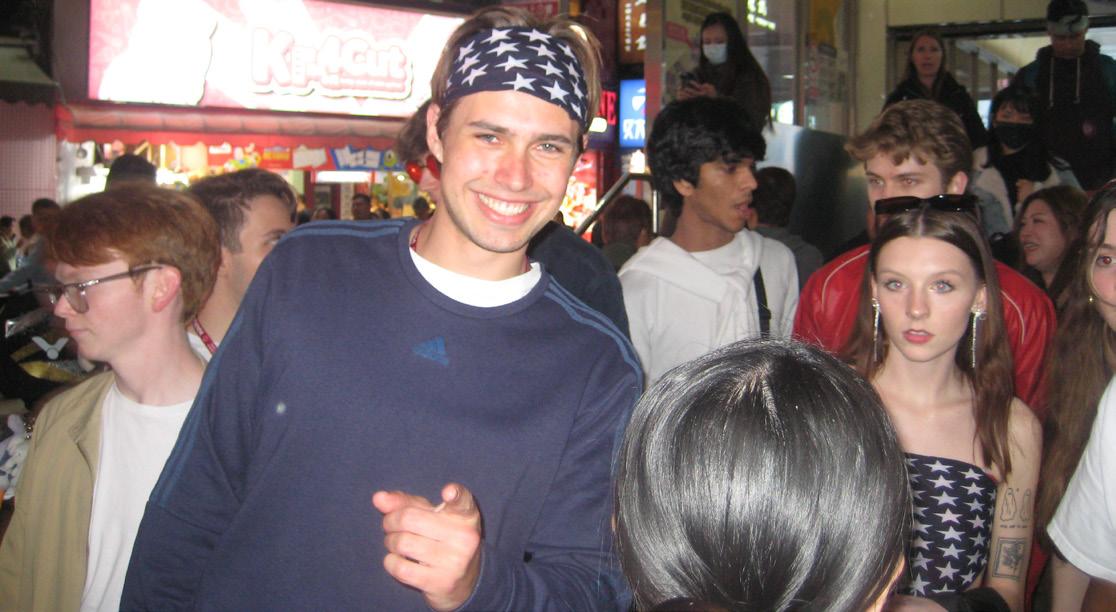
violence. A few hours away, a rum distillery opened and operated in the 19th century by Homère Clément, one of the preeminent Black Martinicans: a socialist doctor, born just four years after the abolition of slavery in Martinique. The distillery has recently been sold to a béké, a direct descendant of former European plantation owners and slaveholders. The island is full of contradictions.
Thirty-odd hours of travel away, it’s easy to forget about the simmering geopolitical tensions that cast a shadow over Taiwan. Traveling there to compete in Harvard University’s annual Model United Nations Conference, Harvard WorldMUN, was sometimes a distraction from the incredibly real threats that hang over what the People’s Republic of China calls a “rogue province.” Taiwan itself, officially the Republic of China, rejects this in no uncertain terms. You are reminded of these dynamics when you see signs providing helpful directions to air raid shelters. Taipei City is a sprawling, cosmopolitan urban space that we explored and enjoyed alongside other students who traveled to compete in WorldMUN from Venezuela, Belgium, Peru, Indonesia, Germany and Taiwan itself. This island, too, is full of contradictions, and all of it, from the Atlantic to the Pacific, is well worth exploring in full. Some key takeaways? Never bet on a bus being on time in Martinique (or even arriving at all). You can find better food at a 7/11 in Taipei than in many regular American restaurants. It’s worth it to buy goggles and a snorkel at the Trois Îlets beaches. The people on both islands are incredibly kind and patient. Learn a few words of French, Martinican Creole and Mandarin. You won’t be disappointed.

by Rokia Sissoko ’28
It was 8:00 a.m. when we arrived at the 7th Street Station; the Levine Scholars class of 2028 gathered for a day of exploring the vibrant city of Charlotte. We met with Levine staff to grab coffee before starting our immersion into the city. Before this, I had barely ventured into the city besides running errands or eating dinner with friends in NoDa, and I was excited to see what the day had to offer.
As we made our way through the streets, Dr. Heather Smith and Tonderai Mushipe, the LSP staff members leading Charlotte Immersion, encouraged us to observe the subtle changes around us. The concrete sidewalks gradually gave way to neatly placed cobblestone paths, each step marking a shift in the environment. Even the light posts, once ordinary in their design, began to take on new, distinctive forms within each of the city’s four wards. It was as though the city itself was quietly signaling that we were stepping into a new place.
I particularly enjoyed the unique beauty of Romare Bearden park in the First Ward for two reasons. First, I believe art is a great way to get to know a community. Second, the blend of natural and futuristic elements reminded me of the future of Charlotte, and how the city’s growth is built upon its past. For example, The Know Charlotte app revealed that churches or stores once stood in place of sidewalks and parking lots. The remnants of the city’s past were now hidden beneath modern development. I learned that over 100 people move to Charlotte each day, and the city’s growth and transformation were clear.

Charlotte is a city marked by its diversity, with residents from various backgrounds and perspectives that shape its identity. The vibrant murals stood out to me, but the city’s diversity is not just seen in its art. Both Charlotte’s growing immigrant population and long-standing local communities contribute to a unique blend of traditions, languages and cuisines. This diversity not only makes the city exciting to explore, but also deepens its character, providing opportunities to learn and enjoy different cultures.
Charlotte, a once vast and intimidating city, now seems a little friendlier and more accessible.
My Charlotte immersion experience was a real introduction to the city. It helped me see beyond the busy streets and towering buildings to understand the layers that make Charlotte unique—the people, the history and the changes that have shaped the city into what it is today.
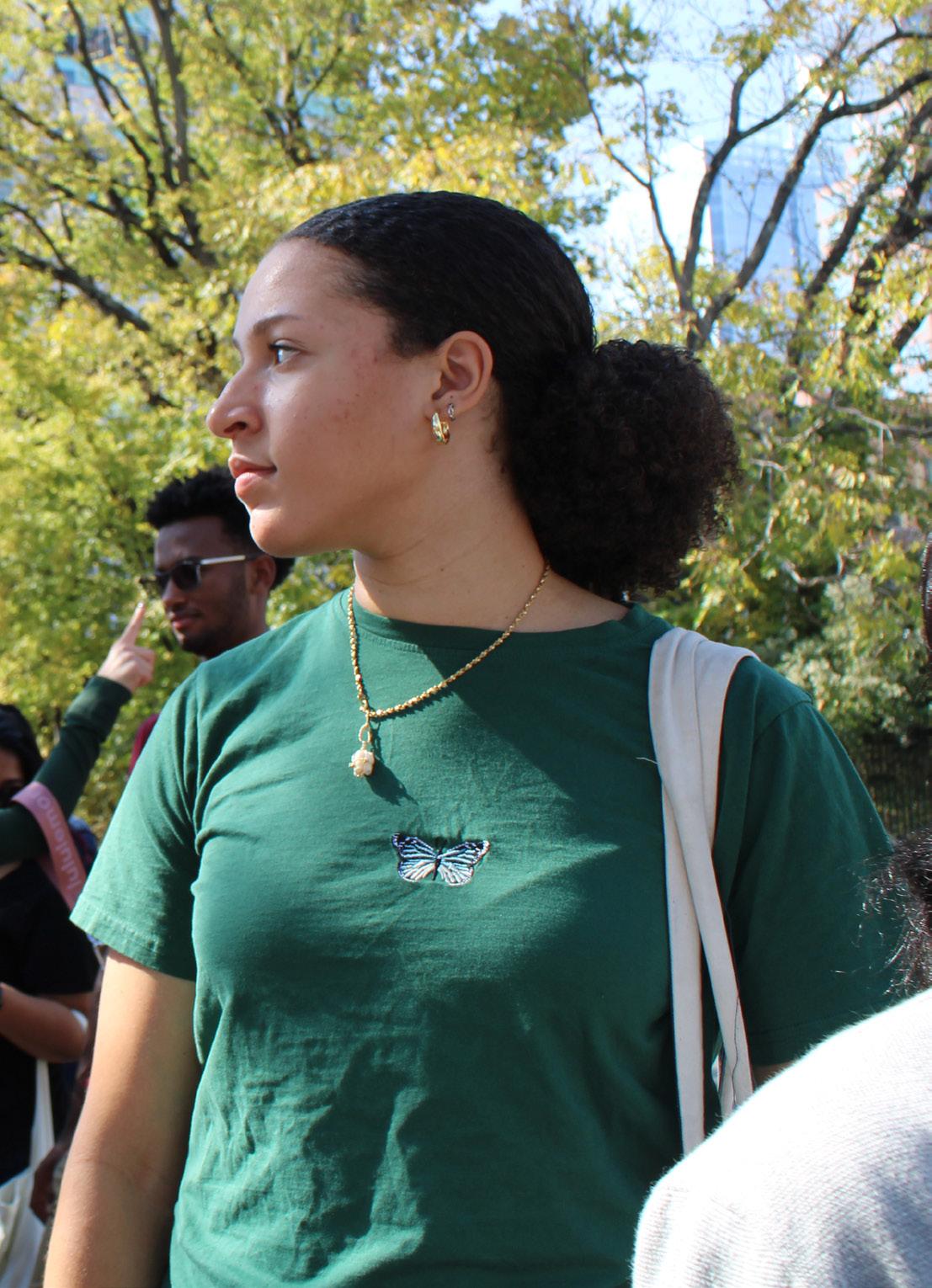
by Owen Mitchell ’26
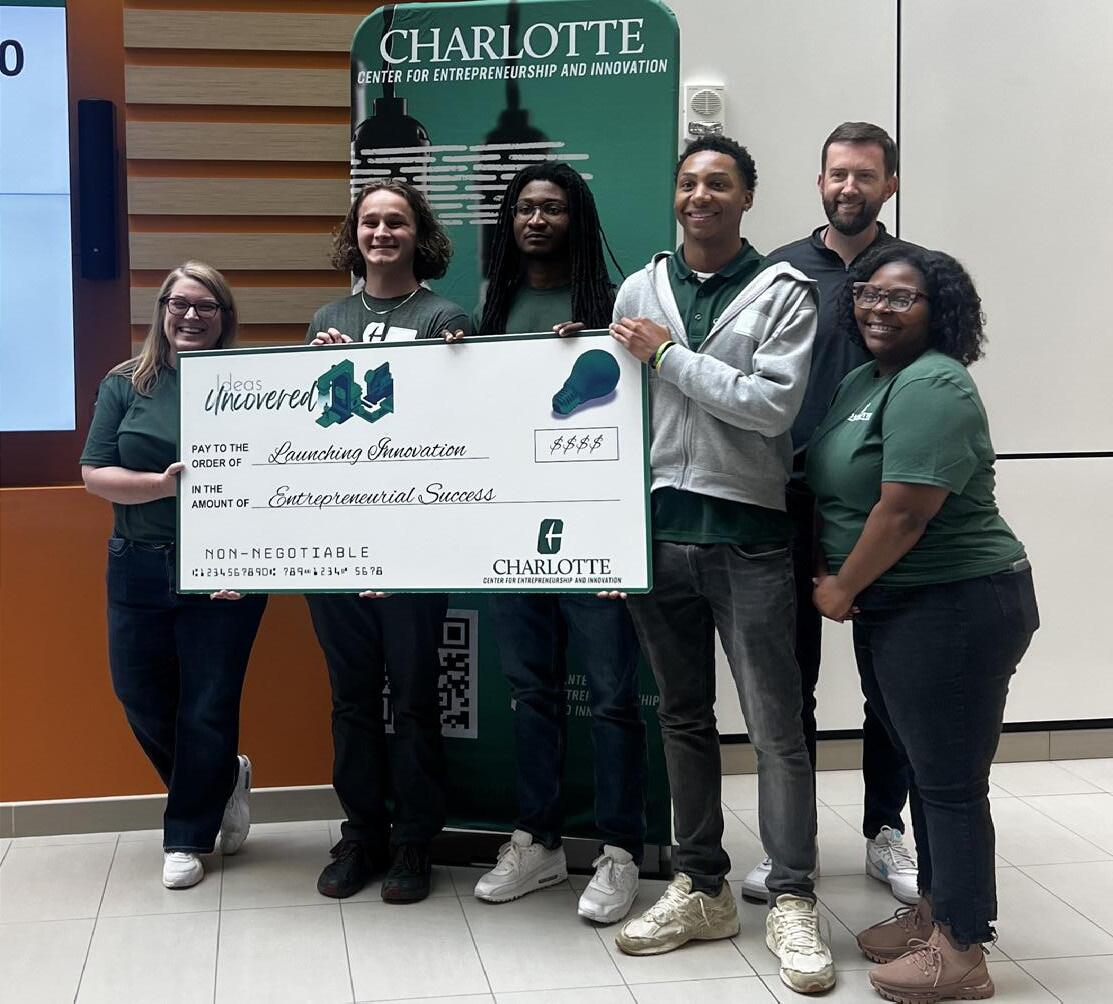
The inaugural UNC Charlotte Center for Entrepreneurship and Innovation Hackathon event, held over Fall Break of 2023, marked a milestone in innovation and collaboration for students Owen Mitchell ’26, Christian Fuselier ’26 and Eli Elk ’26. As participants in the conceptual bracket of the competition, their mission was to develop an idea leveraging AI for the enhancement of education within just three days.
The journey began with a brainstorming session on day one, as the team explored the vast capabilities of AI and reflected on their own experiences as university students. Among the myriad challenges discussed, the cumbersome task of note-taking emerged as a common pain point. With the rapid pace of lectures and the necessity to capture information efficiently, the trio recognized the need for a solution that could streamline this process and enhance studying effectiveness. Thus, the concept of NoteIT was born. This innovative application would revolutionize note-taking by utilizing image processing and AI document sorting to transform handwritten or digital notes into visually appealing and contextually organized
formats. From mind maps to Cornell notes, NoteIT aimed to provide users with a comprehensive toolkit for effective studying. Moreover, the inclusion of a feature to convert notes into practice quizzes further underscored the team’s commitment to academic success.
With their idea in hand, Mitchell, Fuselier and Elk pitched NoteIT to a panel of alumni and local Charlotte business owners in the tech industry. The response was overwhelmingly positive, propelling them into the competitive arena against several other teams. After a rigorous evaluation process, NoteIT emerged victorious, claiming first prize in their bracket. Reflecting on their Hackathon experience, Mitchell emphasized the rewarding nature of tackling realworld problems with creativity and innovation. “It was incredibly gratifying to see our grievances and experiences translated into a solution that resonated with others,” he remarked.
Indeed, the UNC Charlotte Hackathon proved to be an invaluable learning experience for the team, challenging them to think outside the box, hone their presentation skills, and consider the practical applications of technology in education. As Mitchell aptly noted, “this event is a must for any student interested in business or technology. It not only tests your abilities, but also inspires you to explore the endless possibilities of innovation.”
In conclusion, NoteIT stands as a testament to the power of collaboration, creativity and ingenuity in solving real-world problems. While AI may often receive criticism, Mitchell believes that when applied thoughtfully, it has the potential to revolutionize learning and empower students both inside and outside the classroom.

by Noor Chima ’26
Going into the summer, I had no idea where I was headed for a pre-professional experience. As a student double majoring in Biology and Psychology, my interests span various topics such as science, human behavior, social justice and everything in between. I was eager to make the most of the summer before my junior year and hoped to further develop myself both professionally and personally. Unexpectedly, I stumbled across an opportunity on social media about SALDEF, the Sikh American Legal Defense and Education Fund.
As I learned more, I was drawn to SALDEF’s mission: as the nation’s oldest Sikh American civil rights organization, SALDEF focuses on enhancing integration and acceptance of Sikhs in society through policy advocacy, public education and community engagement initiatives. Their selective SikhLEAD Internship Program places a handful of high-achieving Sikh American students in key offices across Washington, D.C. for the summer. The program seemed like the perfect fit for someone like me whose passion for law and civil rights was continuing to blossom. What particularly caught my eye was the unique chance to engage with other yound Sikh leaders who shared a common desire to explore the intersection of our faith, identity and public service. Growing up in Ohio, I often felt disconnected from my community and craved more peer connection. SALDEF provided this opportunity to navigate my identity as a religious minority with other students of similar passions. What began as an application quickly turned into an interview, then later a placement at the U.S. Commission on Civil Rights. Before I knew it, I was packing my bags, driving to D.C. and looking out the window in awe of the lively city I was about to become a part of. As excited and hopeful as I was, I couldn’t ignore the nervousness and anxiety that was building. Moving to a new city where I knew no one, interning with a highlevel government office, and representing my faith community all seemed exhilarating, yet daunting. But as I stepped out of the car and caught sight of the Capitol building rising before me, I took a deep breath and realized this was the chance of a lifetime. Little did I know, this experience would prove to be
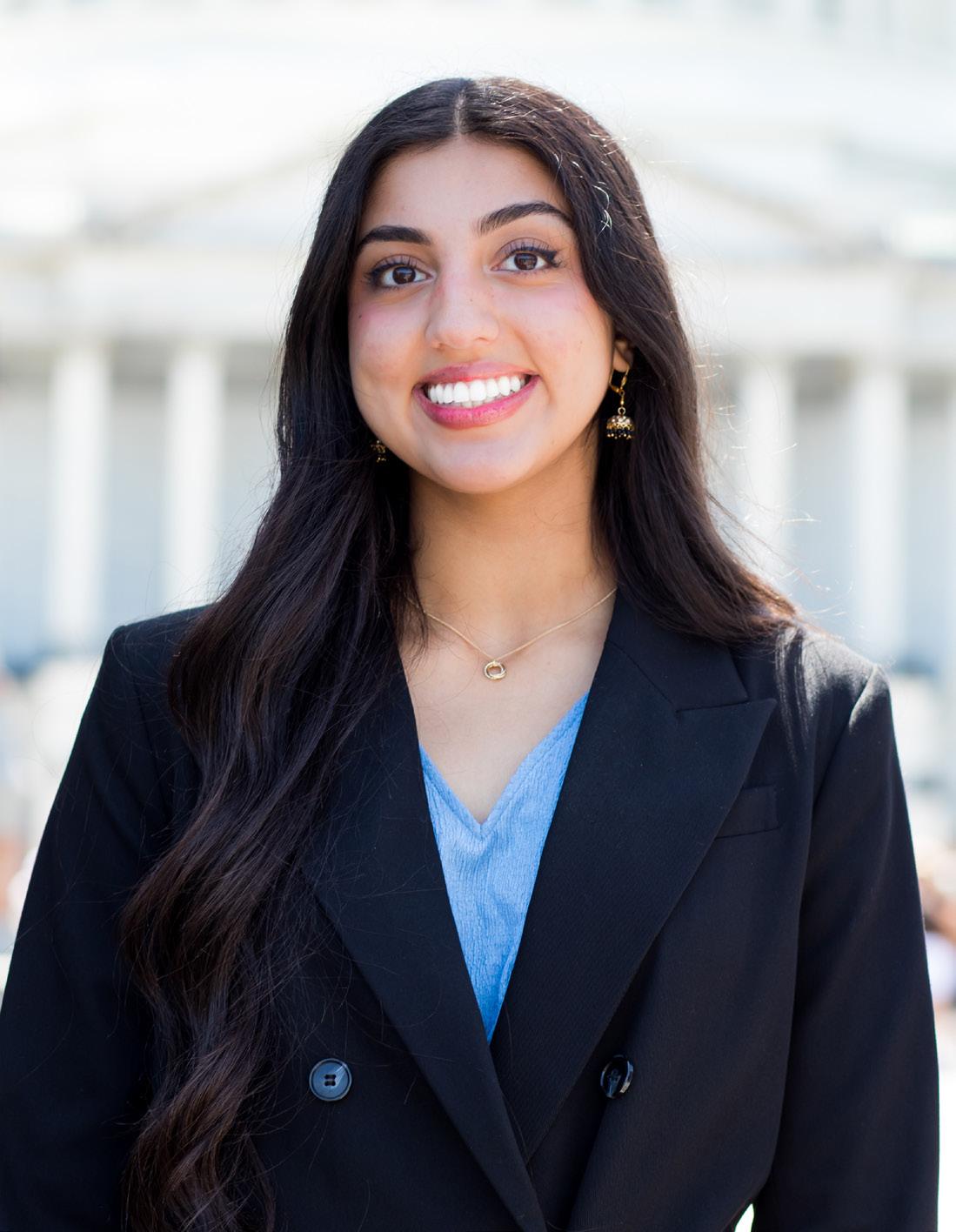
more rewarding than I could have ever anticipated. My days in Washington, D.C. were a whirlwind of new experiences, learning opportunities and a fair amount of sightseeing (because, of course, you can’t be in D.C. without soaking up the history and food)! Professionally, I was serving as an intern for the U.S. Commission on Civil Rights, an independent, bipartisan federal agency focused on informing national civil rights policy. At my desk, I found myself knee-deep in fascinating civil rights reports, statistics and cases that will serve integral roles in shaping the future of civil rights in our country. With each new project I was assigned, I felt my legal research, writing and analysis skills drastically improving, while my understanding of the complexities of injustice grew deeper. At the Commission, I had the incredible opportunity to work under the mentorship and guidance of Commissioner Glenn Magpantay and his Special Assistant, Stephanie Wong. Commissioner Magpantay, the sole Asian American Commissioner, exemplifies the importance of using one’s identity to fight for others. His career as a civil rights attorney and commitment to LGBTQ rights and advocacy for Asian American communities inspired me to explore how I could apply my own intersectional identity and skills to make a meaningful impact. I soon realized
just how connected my work at SALDEF was to the larger landscape of civil rights. I wasn’t just reading reports or attending meetings, but instead I was learning how to advocate for marginalized communities and how my perspective as a Sikh American was essential to that work.
While my internship provided invaluable professional experience, it was my involvement with the seven other Sikh American students in our tight-knit cohort

that truly helped me rediscover a sense of belonging. As we explored new museums, restaurants and visited the sights of D.C., we also dedicated numerous hours a week toward planning and organizing our Sikh awareness and advocacy efforts on Capitol Hill. Over the span of several days, I watched proudly as our cohort successfully distributed informational flyers
a voice in the halls of political power, where we’ve often been underrepresented or misunderstood. However, the most rewarding part of my time in D.C. was not just the work, but rather the people I got to share this experience with. Alongside my other SikhLEADers, I felt a deep sense of connection and purpose as we worked to represent our community. I’ll never forget the evenings spent under the D.C. stars, sharing Insomnia Cookies, personal stories and deep conversations about our religious identity as young Sikhs. These moments were more than just bonding or advocacy; they were affirmations of my place and identity in the world, as both a Sikh and a changemaker.
Looking back on this summer, it’s hard to put into words the full extent of what D.C. gave me. I arrived unsure of my path, but I left with a clear sense of purpose—ready to pursue a career in law, with a commitment to civil rights, and an unwavering dedication to representing my faith. Oftentimes, people use the word “transformative” to describe experiences, but this was the first time with certainty that I fully felt my skills, perspectives and passions transform through an experience. Although our cohort faced challenging obstacles, we also shared critical moments of growth and reflection. This summer—filled with meaningful conversations, stimulating projects and endless memories—was, without a doubt, the best summer of my life. I’d stepped outside my comfort zone, and in doing so, I’d found a deeper connection to who I am, who I want to be and how I want to make an impact around me. Washington, D.C. was not just a city I worked in for a few months: it became a part of me, and I carry its lessons and experiences with me every

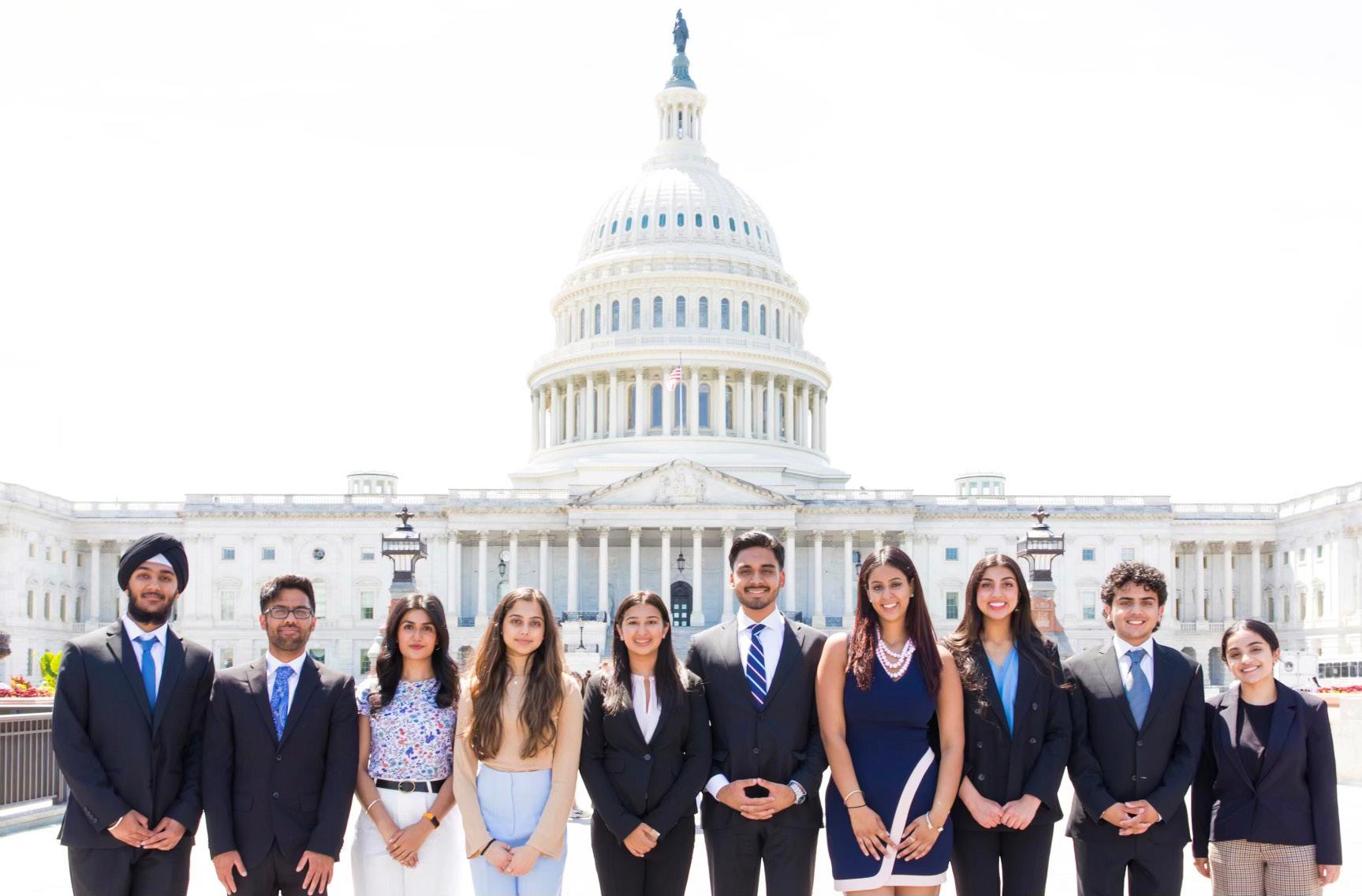

When I stepped off the plane in Rome this summer, I was ready for anything. This was my second time studying abroad and it was going to be WAY easier than my semester at the Eugeniusz Geppert Academy of Fine Arts in Wrocław, Poland. I knew almost everyone on the trip already, the trip was only five weeks, and I had a set schedule and curriculum. Even if I was a teacher’s assistant instead of just a student, my experience in Italy would be a breeze. Poland had been an incredibly unique and overwhelming experience. After a long Saturday of traveling, all I wanted to do was sleep and shop for basic necessities the next day only to find out everything would be closed on Sunday. I managed to rally and made my way to a mall nearly an hour away to buy sheets for my bed, a sim card for my phone and a pack of pierogi to survive off of for a few days. Everything was a learning curve. Even signing up for classes was no easy feat. There was no course catalogue; instead, the international students met with professors in their desired studio concentrations to present portfolios and project ideas, hoping to be allowed to use the facilities. Thankfully, I had one particularly appealing page in my sketchbook that showed promise. With a full load of four studio
by Caroline Wingerd ’25
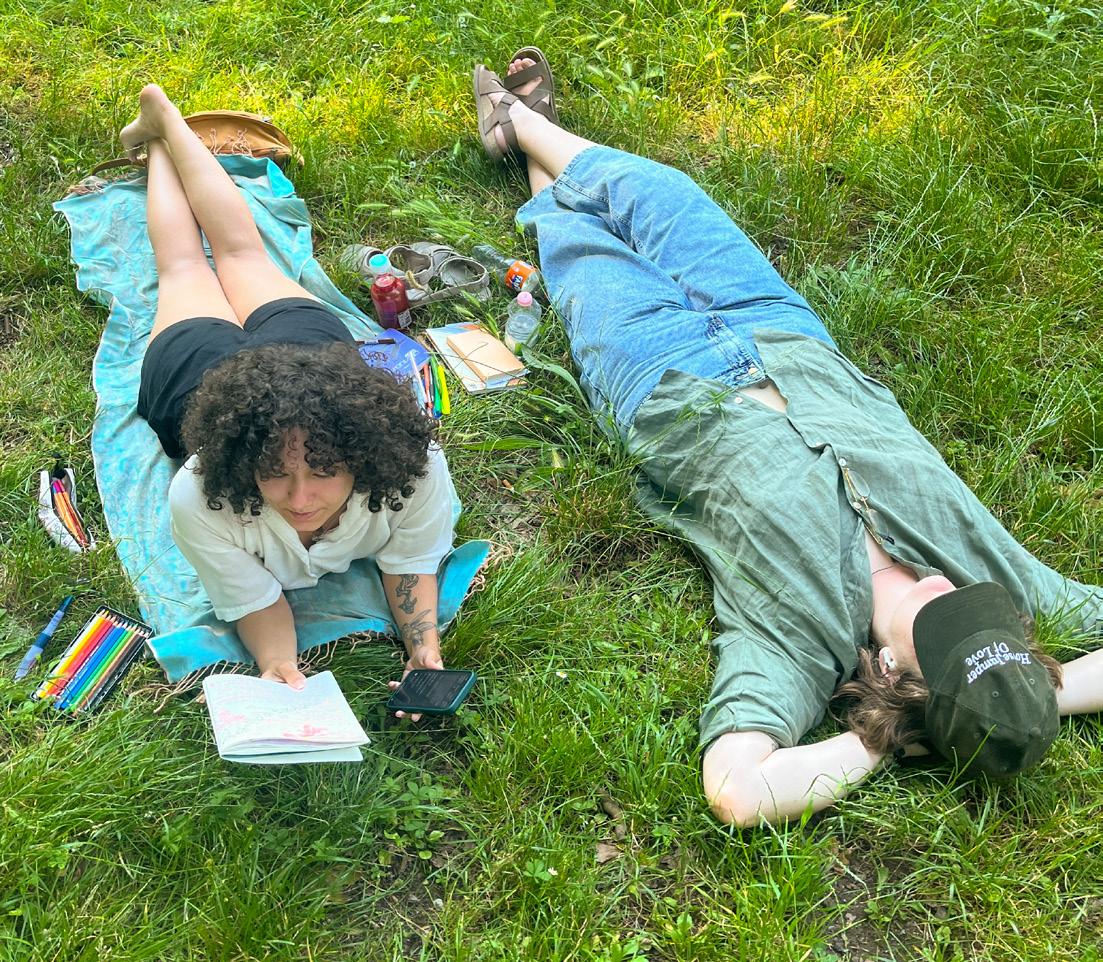

courses in printmaking and creative drawing and an intro to Polish credit, I was set. It was a hectic five months spent in studios, cafes and Flix buses, trying to make the most of my time. If the workload wasn’t enough, I also found myself curating an exhibition at the end of semester to showcase the work of the Erasmus+ students.
As a group of strangers from Belgium, Bulgaria, France, Greece, Hungary, Turkey, Portugal, Romania, the United States and Slovakia now in Wrocław, Poland, we spent our first exhibition meeting desperately trying to find common ground beyond “art students.” We found ourselves poised uniquely in the middle of our lives and education experiences with a lack of understanding of how we fit into this new place. So we settled on a concept to build a body of work around: “the Outsider.”
• What does it look like for a person to be outside the norm?
• How do we perceive what is inside and outside the norm?
• Is anyone truly an insider?
• How do you reconcile the anticipation of new experiences and the yearning for everything you leave behind?
• What pieces of home do you find and rebuild in this new environment?
• What defines our perceptions of this place as hostile or homey?
The final show was called “In Medias Res,” a Latin literary term meaning “in the middle of things.” It suited us well, effectively representing the time and space in which this group of developing artists resided. In the exhibition, the dialogue of sculpture, printmaking, photography, design, installation and performance invited the viewer to join in the uncanny position of the Outsider. Overall, it was a great success, complete with a stellar pavlova at the reception.
Needless to say, a year later, I felt more ready to tackle Italy on UNC Charlotte’s faculty-led program. To make matters even more exciting, we would be attending the Venice Biennale, an annual international cultural exhibition, themed “Foreigners Everywhere,” tying beautifully into my Polish exhibition experience. I felt overly confident in my ability to navigate a new environment, that is until I made it past customs and into the baggage claim area. I watched the carousel
around and around, one of my worst fears coming true with each rotation. My navy blue duffel bag did not meet me in Rome. It continued to evade me in Venice. And it has yet to reappear now that I am back stateside. I don’t know what journey my collection of curated outfits is on, but their disappearance shook my self-assurance.
Despite this choppy start, I was still determined to make the most out of this trip, even if it was less fashionable. I enjoyed the ruins and art museums during the day, visited every clothing store in the area in the evenings, explored local night life ‘til dawn and woke up a few hours later to do it all again. It was exhausting and I loved every second of it. Each bit of art and culture was consumed with the same voracious appetite that left bowls of cacio e pepe polished clean.
By the time we made it to the Venice Biennale, I had already widened my understanding of ancient to contemporary art beyond my initial hopes. And here I was, at the biggest international art exhibition, featuring the best works from 88 countries and 300 artists. Over the course of two days, I wandered the halls and pavilions of the Giardini and Arsenale soaking in as much as I could manage. Every work was monumental in its own way, filling me with the need to create. As if it couldn’t get even better, I had the opportunity to speak to an artist from the Seychelles pavilion and spend an additional day involved in her performance piece based on human connection and conversation.
As I look towards my final thesis work and the BFA show in May with the knowledge of my time in Poland and Italy behind me, I am brimming with a mixture of creative energy and terror. Nothing seemed to run smoothly and it probably never will, but I am determined to make my own mark on art history. My own bite-sized tidbit of culture to add to the canon of so many artists before me.
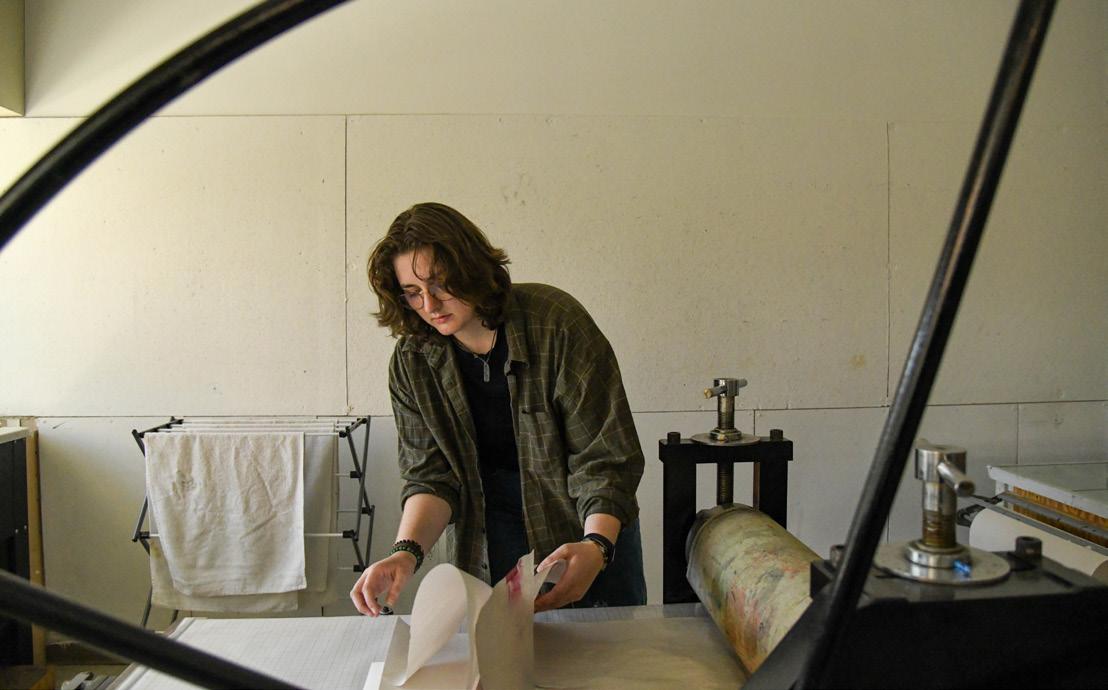
by Roshna Ragunathan ’24
Starting college can be a daunting experience, especially for first-year students who often face a whirlwind of new challenges. Mainstream media tends to paint a stereotypical picture of college life filled with constant partying and reckless behavior, making it easy to overlook the real concerns about safety and well-being on campus. The unfortunate reality is that college-age women (ages 18-24) are the highest risk group for sexual violence at a rate three times higher than other women. On college campuses, women, both historically and at present, experience issues with rape, sexual harassment and violence. Sadly, UNC Charlotte is no exception. While educational programs and resources exist, such as Title IX, the Center for Counseling and Psychological Services (CAPS) and the Center for Wellness Promotion (CWP) on our own campus, a staggering one in five women experience sexual violence by the time they leave university.
Niners Against Violence (NAV) is committed to changing this narrative. Jesse Smith-Gonzales ’24 and I created NAV, a multi-session comprehensive interpersonal violence (IPV) risk-reduction program for our civic engagement project. Co-hosted with the CWP, NAV is an 8-week educational workshop program that dives deep into the realities of interpersonal violence. Through engaging sessions, participants learn vital skills and strategies to promote healthy behaviors and cultivate a safer campus culture through engaging sessions. This cohort-based program is open to both undergraduate and graduate students, focusing on first- and second-year students navigating this pivotal time in their lives.
Jesse and I expected students to jump at the unique opportunity to learn how to protect themselves by identifying harmful behaviors and contributing to a safer campus culture. We soon realized, however, that it takes more than just the promise of helpful information to entice busy college students to commit two hours of their week to the program. So, we added a dinner component to the workshops (prospects of free meals usually do the trick). With every tabling event, sign-ups quickly populated the spreadsheet. We eagerly waited for our first session in Fall 2023 to see how many students would join us. Seven students joined us as participants for the first NAV cohort. While there were fewer students
than we expected, it was endearing to see how much each student brought to discussions exploring how we can change Charlotte one small action at a time every week. The CWP designed a NAV ambassador program, where upon completion of the NAV program, participants can become ambassadors who lead, facilitate and support violence prevention initiatives on campus. We were ecstatic when all seven of our participants decided to become NAV ambassadors to continue NAV’s mission on a broader scale. For our Spring 2024 cohort, we enlisted their help to create more tabling opportunities and social media campaigns, and soon enough, engagement with the program was booming. For our second-ever cohort, we had 20 students join us!
Jesse and I could have never imagined creating a more dynamic group dedicated to preventing interpersonal violence on campus. Small actions such as dispelling popular myths about sexual violence or being a mindful friend who knows the right campus resources to reach out to for help make all the difference in the long run. Each of these small actions accumulates to bigger changes over time, and we hope that NAV continues to be a starting point for students who want to become more involved in the IPV prevention space and spread their impact one person at a time.
Roshna and Jesse tabling to recruit new members.
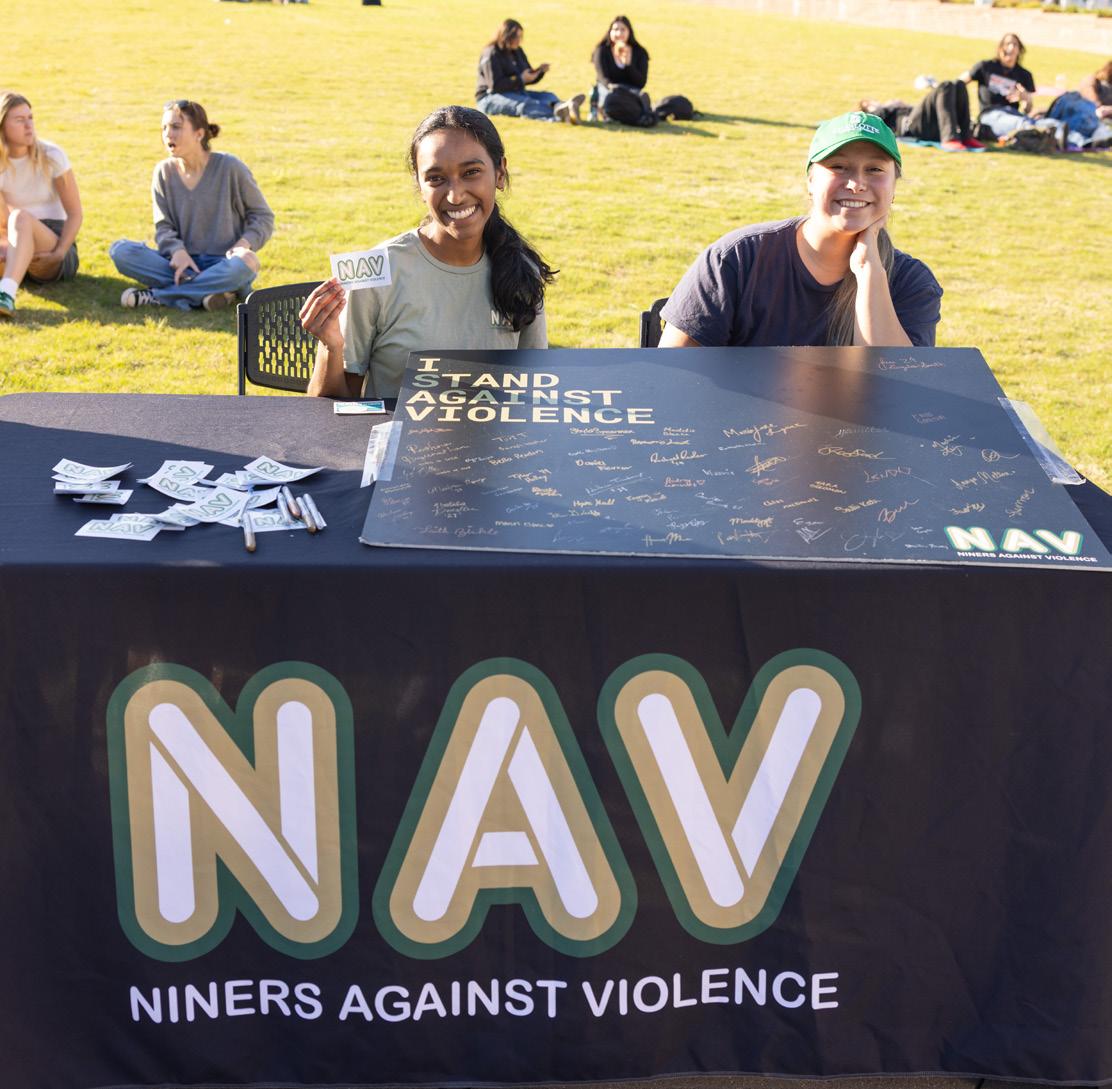
by Leysha Caraballo ’19
After graduating in 2019, I moved to Washington, D.C. with the hopes of working in the environmental field. I wasn’t sure what that was actually going to look like, but I knew I was in the right city to do it. I went from digital fundraising to environmental public affairs to most recently, ocean advocacy. At the beginning of this year, I took on a new role at the Natural Resources Defense Council (NRDC) as the first Next Wave Oceans Fellow. NRDC is an international environmental nonprofit that has been advocating for people and nature for over 50 years. My main project focuses on protecting the critically endangered Rice’s whale. Rice’s whales are an extraordinary part of America’s natural heritage—a three-million-year-old species that lives only in the Gulf of Mexico. In 2021, after a decade of research, the whale was finally recognized as a unique baleen whale—living in a narrow strip of habitat where the continental shelf gives way to deeper water. Now, with fewer than 100 of these whales left, scientists agree that stronger protections are critical to save them from the first-ever human-caused whale extinction. The Gulf of Mexico is a high-traffic area for large commercial ships, like tankers and cargo vessels. Rice’s whales are at risk of getting struck and killed, especially at night when they stay close to the ocean surface to rest. Slowing vessels down to safer speeds would greatly reduce the strike risk for the whales, and it’s already a proven method in vulnerable marine habitats worldwide. Oil spills are another major threat for the whales: the 2010 BP Deepwater Horizon spill alone led to the loss of 20 percent of the total population. Ensuring that the Rice’s whale habitat is protected and putting in more safety measures to prevent spills would greatly help the species’ chance of survival. Considering that the species is relatively new to us, educational outreach is essential and a key part of what I do. To help with outreach to general audiences and congressional staff, I led the launch of our coalition website, ourgulfwhale.org, which provides background on the species and the major threats it’s facing. One of the most exciting parts of my job has been the opportunity to develop my lobbying skills. I’ve led Rice’s whale meetings with staff on Capitol Hill that focus on the congressional attacks aimed at limiting or removing protections for the species. My fellowship lasts for one more year, so I’m looking
forward to expanding our Rice’s whale campaign work to give this species the best odds of survival.
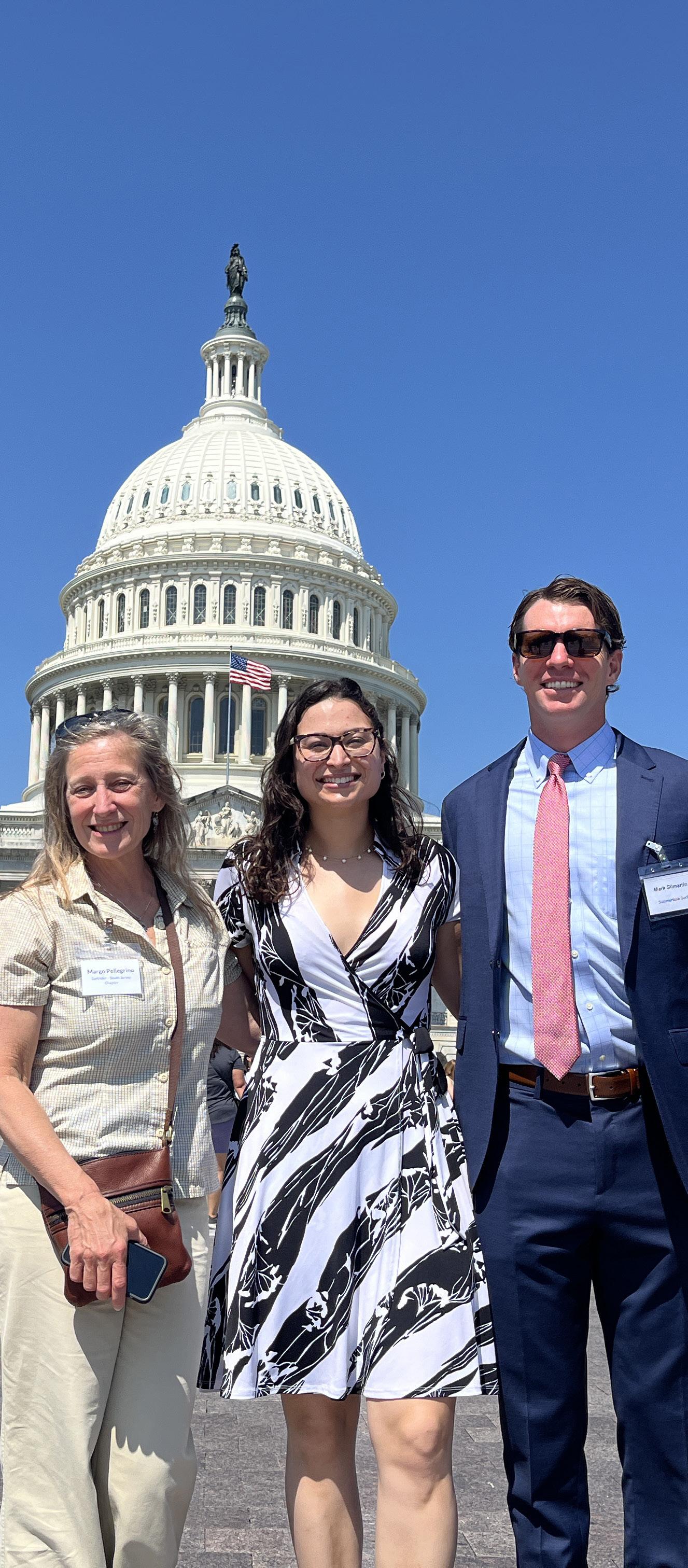

The Levine Scholars Program
9201 University City Boulevard
Charlotte, NC 28223
The Levine Scholars Program is a four-year merit scholarship that includes full tuition, room, board and four summer experiences, including study abroad, which will develop leadership skills and social awareness. In 2010, the inaugural class of Levine Scholars enrolled at UNC Charlotte and approximately 20 scholarships are awarded to high school seniors every year. The Levine Scholarship is valued at $105,000 for in-state students and $155,000 for out-of-state students over four years.
Levine Scholars are talented high school seniors from across the United States whose accomplishments epitomize the values of philanthropists Sandra and Leon Levine, including a demonstrated commitment to community service, intellectual curiosity and the capacity for ethical leadership. Through community engagement, mentoring relationships with civic and business leaders in Charlotte and a rigorous academic program, Levine Scholars develop the characteristics necessary to produce positive change in the communities in which they live and work. Scholars are able to turn their community service interest into actions with community service grants of $8,000 to support their work in the community.
It is this unique connection to Charlotte—its resources, leaders and challenges— that differentiates this program from other scholarships of its kind. The program is specifically designed to expose Levine Scholars to the urban culture of a thriving city and to engage them in service to address needs of the citizens of Charlotte.
